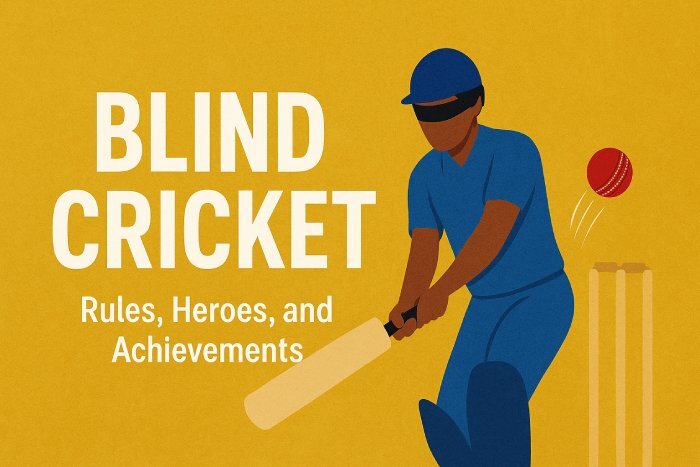
Cricket is often called a game of skill, precision, and teamwork – but when it comes to blind cricket, it’s also a story of courage, innovation, and inclusivity. Blind Cricket allows visually impaired players to experience the thrill of the game, proving that passion for cricket knows no limits.
What Is Blind Cricket?
Blind Cricket, also known as visually impaired cricket, is a specially adapted version of the traditional game. It was created to enable visually impaired individuals to play using their remaining senses – primarily hearing and touch.
The game uses a special audible ball that makes a rattling sound, helping players detect its movement through sound.
How Blind Cricket Works
The sport is played with slight modifications to standard cricket to ensure fairness and safety, while keeping the excitement intact.
1. Teams and Players
Each team consists of 11 players, divided into:
- B1 (Totally blind) – 4 players
- B2 (Partially blind) – 3 players
- B3 (Partially sighted) – 4 players
This mix ensures a balanced and inclusive team composition.
2. The Ball
A plastic ball filled with ball bearings or metal pieces is used so that it makes a distinct rattling sound when it rolls or bounces, allowing players to track it by hearing.
3. The Pitch and Field
The pitch is slightly shorter (16–18 yards), and boundaries are reduced to help players engage more actively. Fielders rely on communication and auditory cues to coordinate movements.
4. Bowling Rules
Bowlers deliver the ball underarm, and it must bounce at least twice before reaching the batsman. This helps batsmen anticipate the ball’s path and play safely.
5. Batting Rules
Batsmen listen for the ball’s sound to judge timing and direction. Once contact is made, runners assist in calling runs and ensuring safe coordination between wickets.
6. Dismissals
The methods of dismissal – bowled, caught, LBW, and run-out – are largely similar, with specific allowances based on the player’s vision category.
History of Blind Cricket
Blind Cricket was first officially played in Melbourne, Australia in 1922, after visually impaired students began using a tin can as a ball.
The sport gained global recognition with the establishment of the World Blind Cricket Council (WBCC) in 1996, headquartered in India.
The first Blind Cricket World Cup was held in 1998 in Delhi, marking the beginning of international tournaments for visually impaired players.
Famous Blind Cricket Heroes
- Shekhar Naik (India) – Captain of India’s Blind Cricket team who led the side to T20 and ODI World Cup victories. He received the Padma Shri Award in 2017.
- Ajay Kumar Reddy (India) – Another inspirational leader who guided India to multiple international triumphs.
- Matthew Page (Australia) – Known for his incredible batting consistency.
- Masood Jan (Pakistan) – A prolific batsman who holds the record for the highest individual score (262) in Blind Cricket.
These athletes have not just broken records but also barriers, proving that true vision lies in determination.
Major Achievements in Blind Cricket
- India won the Blind Cricket World Cup in 2014 and 2018.
- The Blind T20 World Cup was first played in 2012, and India emerged victorious in 2012, 2017, and 2022.
- Blind Cricket has now spread to more than 10 countries, with regular domestic and international tournaments.
These successes highlight how inclusive sports can empower differently-abled athletes and unite fans across boundaries.
Impact and Recognition
Blind Cricket has redefined accessibility in sports. It promotes:
- Confidence and teamwork among visually impaired players
- Awareness about inclusivity and sports for all
- Support for adaptive sports equipment and training programs
The sport continues to grow, with organizations like the Cricket Association for the Blind in India (CABI) working tirelessly to develop talent and host tournaments.
Conclusion
Blind Cricket is more than just a modified version of the sport – it’s a symbol of hope, strength, and equality. The athletes who play it inspire millions, showing that the spirit of cricket doesn’t depend on sight, but on vision from within.
Also Read,
Leave a Reply